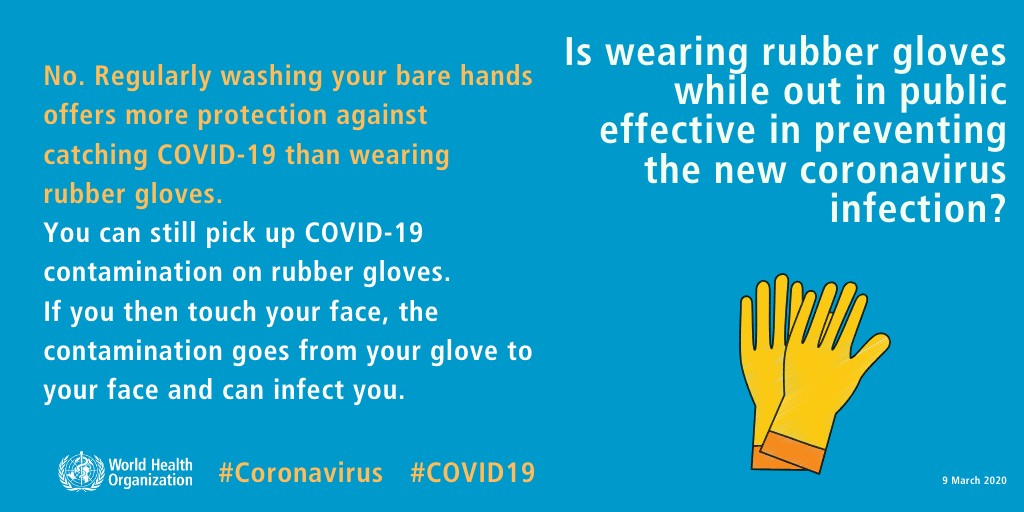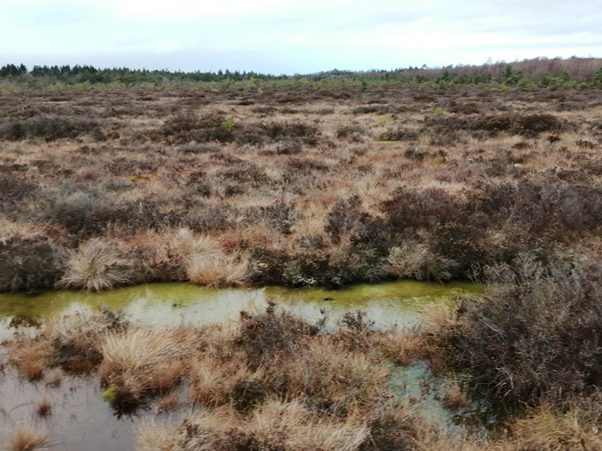First Published in UCD College Tribune
In an interview released on the 11th of May, UCD Professor Dolores Cahill claimed that the global lockdown in response to the COVID-19 crisis was unnecessary. Cahill also repeatedly made the controversial claim that once you have the virus, you are immune for life; a claim for which there is very little evidence as of yet. Indeed, the interview was packed full of misleading and inaccurate statements about the virus. The trusted fact-checker Health Feedback rated the interview as “based on inaccurate and misleading info”.
Both YouTube and Facebook removed the video from their platforms for violating their misinformation policies after Business Insider reported that the video was “filled with misleading claims about COVID-19”. John Quinlan, co-founder of the independent fact checker Infotagion was quoted in that article as saying, “when we fact-checked this video we found there was no scientific evidence to support any of her claims”.
A History of Misinformation
First, let us take a look at who Dolores Cahill actually is. Cahill has impressive academic credentials and is considered a leading figure in proteomics: the study of how proteins function and interact with each other. Cahill has been involved in a number of impressive projects, and in 1997 co-founded a company called ‘Protagen AG’, which exists to this day under the name ‘Protagen Protein Services’. Strangely, however, there is no mention of her name on the Protagen website. The College Tribune approached Protagen for comment on Professor Cahill’s claims, but received no response.
Cahill also worked at the prestigious ‘Max Planck Institute’ in Germany from 1995 to 2003. When Business Insider contacted the Institute for their article, they were told that “The work [Prof Cahill] performed at our Institute has no relation to the claims she has made with regards to the pandemic. The Max Planck Institute for Molecular Genetics distances itself very clearly from them, and we do not want to be associated with any of her claims in any way”.
Cahill has not been publishing scientific papers for several years, with the last paper she co-authored in 2016 being retracted by Oxford University Press “due to the discovery of significant errors relating to methods and presentation of results”. Cahill has instead focused on politics. She is currently the chairperson of the fringe political party known as the ‘Irish Freedom Party’. The far-right party’s platform revolves around support for ‘Irexit’; the idea that Ireland should follow the UK in leaving the EU. Cahill’s ‘Which Candidate’ profile lists one of her main priorities as being “to stop Political Correctness being used to intimidate people from speaking the truth.” The party is yet to win a seat in an election.
The Irish Freedom Party arose from a meeting in the RDS which was addressed by conservative brexiteer Nigel Farage. Party leader Hermann Kelly has repeatedly warned about the ‘Great Replacement’, a xenophobic conspiracy theory which claims that people are being intentionally replaced by immigrants. According to the New York Times, this ‘theory’ was cited by the shooters in both the El Paso and New Zealand mass shootings. Kelly also achieved widespread disdain in 2007 when he wrote a book which claimed that Magdalene Asylum victim Kathy O’Beirne had lied about her experiences.
I mention these political affiliations only because they may be relevant to the claims Cahill has made surrounding the virus. It is important to remember when reading her claims, that far-right parties around the world have been opposing lockdowns on the basis that the ‘nanny-state’ is unjustly depriving people of their freedom. It is also important to remember that such governments, like those in the US, Brazil and Russia, have proven far less capable of slowing the spread of the disease, since they generally prioritise the health of the economy over the health of their citizens.
So, What Did Cahill Actually Say?
Straight off the bat, Dolores came in hot with the claim: “There should be a lot of hope that this virus isn’t as dangerous as it has been shown to be, and also there’s major issues like the media are reporting the number of cases, when actually someone who has had the virus (like me, I had this virus in January and February), your immune system clears it after 10 days and then you are immune for life. So, you’re not a case. You’re immune for life. And so that is very important because the way it has been done in the media is as if a case is something dangerous.”
Ok, so a lot to unpack there already. First thing to say is that there is no evidence that someone who has had the virus is immune for life. To use the WHO’s words, “There is currently no evidence that people who have recovered from COVID-19 and have antibodies are protected from a second infection”. Our best guess, which is based on knowledge of other coronaviruses, is that someone who has been infected may be immune for a few months to 2 years, but that is very much still an unproven estimate. It all depends on the rate of mutation and the type of mutations which occur.
When the media report the number of cases, they are not reporting the number of immune people. They are reporting the number of infected people. Whether or not those people will become immune after clearing the virus is unclear, but what is certain is that those people are likely to be infectious, and that their lives are at risk, particularly if they are elderly or have underlying conditions. So yes, a case is something dangerous. The media did not invent the approximately 400,000 people who have died globally at the time of writing.
Cahill goes straight on to say: “we can see that in Ireland, as globally, half of the people who die are over 80 and that children and anyone under 50, unless they have chronic conditions like cystic fibrosis they will have no issue. So, what I am saying is there is no need for the lockdown and that we could actually all go back to work.”
The lockdown is indeed necessary. We all know already that elderly people are more vulnerable to this virus. In the absence of a lockdown, the virus would have spread through the population like wildfire, with low-risk people acting as a stepping-stone for the virus to reach vulnerable people like the elderly and those with underlying conditions. Our best shot at avoiding the mass deaths of vulnerable people, like we saw in Italy and now the US, was to stop the virus in its tracks. According to the vast majority of experts, the best way to do that was a lockdown.
Many people have made the mistake of thinking that because the virus has not been quite as catastrophic as predicted for Ireland, that the lockdown was thus unnecessary. This fails to take into account the cause-and-effect relationship between the strength of the lockdown and the severity of the outbreak. Had we failed to lock the country down, things could have gone much, much worse. It is like landing an airplane, then saying ‘well, it turns out we didn’t need the pilots after all because we landed safely’. If the pilots had not been present, then the outcome would have been drastically different.
Over 1,000 academics and scientists have now called on the government to revisit its stance on the lockdown, suggesting that the restrictions should continue until the virus is eliminated.
Other claims made by Cahill include that between 7 and 15% of Irish people were already immune to COVID-19 before the current pandemic began. She claims this on the basis that people have developed immunity to diseases like the 2003 SARS outbreak or subsequent MERS outbreak. This is simply false. Based on her wording, it seems that Cahill is claiming that 7-15% of people worldwide have SARS and MERS antibodies, and then extrapolating to Ireland. WHO records show that between 1st November 2002 and 7th of August 2003, during the height of the outbreak, only 1 person in the Republic of Ireland contracted SARS. No cases of MERS have ever been reported in Ireland. It is extremely unclear, then, how between 343,000 and 735,000 Irish people could have developed immunity to these diseases as Cahill claims.
Cahill even claims that “practically everyone in the world” is immune to SARS, a claim which Health Feedback calls “baseless, […] as the vast majority of the world’s population has not been exposed to the SARS virus and therefore cannot have developed immunity to the virus.” Further, while it is possible that immunity to SARS could to some extent protect people from developing the more severe symptoms of COVID-19, these antibodies are likely to be localised around east Asia where SARS actually took hold. Moreover, we have yet to prove that SARS antibodies actually provide significant protection against COVID-19. There is preliminary evidence that this kind of ‘cross-reactive immunity’ can also occur in people who have had related coronaviruses like some of the viruses we call the ‘common cold’, but the jury is still out on that too.
Cahill also claims that if we had quarantined people with underlying conditions and people over 80, then told them to take vitamins C and D and zinc for a few weeks, there would have been “no deaths”. According to Health Feedback, vitamin C has been shown to reduce the risk of respiratory infection, “but this effect has been observed only in individuals experiencing severe physical stress, such as marathon runners, and not in the general community”.
It is also true that vitamin D protects against respiratory infection, but this is likely to only be the case if you already have a vitamin D deficiency. A significant amount of people do have such a vitamin D deficiency, so taking supplements (or getting more sun) can’t hurt. It would not, however, stop the virus dead in its tracks as Cahill claims. A recent study has found that vitamin K helps to protect against COVID-19 specifically, but again only if you already have a vitamin K deficiency
Cahill also claims that wearing face masks can lead to hypoxia which weakens the immune response. In other words, she is saying that the decreased amount of oxygen you inhale makes you less able to fight off the virus. Again, this has been thoroughly debunked. The use of masks does not result in hypoxia in healthy people, nor does it weaken the immune response. It is recommended that masks are not used on children under 2 with respiratory problems, but that is it.
Enter Judy Mikovitz
Cahill cites an American scientist named Judy Mikovitz as one of her heroes. Mikovitz came under significant fire in 2011, when a ‘breakthrough’ study she had conducted on Chronic Fatigue Syndrome (CFS) fell apart under scrutiny. The results Mikovitz found could not be replicated by other researchers, leading many to believe that there had been a contamination. Mikovitz has been in the news more recently for attacking US disease expert Anthony Fauci and claiming that face masks ‘activate’ COVID-19. Sound familiar?
It may seem strange that Professor Cahill’s hero is a researcher who was not well-known in the scientific community prior to her breakthrough study being discredited. Mikovitz, however, has become a martyr for the ‘anti-vax’ movement and has called for an immediate moratorium on all vaccines. Mikovitz has also recently repeated the conspiracy theory that COVID-19 did not naturally jump from animals to humans; a theory that has been extensively debunked in the scientific literature.
Both Mikovitz and Cahill are public supporters of hydroxychloroquine as a treatment for COVID-19, despite some initial studies suggesting that it could, in some cases, be fatal to patients. In the interview, Cahill claims that hydroxychloroquine is the “most efficient treatment” and that there is an “oversupply” of the drug globally. While it remains somewhat unclear whether the drug will prove to be effective, we categorically do not have an ‘oversupply’ of it, with malaria running rampant across Africa. A study published in the journal Medicine in Drug Discovery in March states that “clinically justified or not, the current shortage for HCQ [hydroxychloroquine] is acute”.
The studies which came out in May claiming that the use of hydroxychloroquine in COVID-19 patients could increase fatalities were based on data from a small company called Surgisphere. This data is now coming under serious fire, with respected medical journal The Lancet retracting the study. According to The Guardian, Surgisphere has only 6 people in their employ; one of whom is a science fiction writer. The fact that this dataset may be unreliable, however, does not mean that the drug is in fact safe. A subsequent study, which has been hailed as relying on solid data and having a good methodology, found that hydroxychloroquine was “no better than a placebo”. I am not saying that hydroxychloroquine definitely does not work, but only that it is too early to say.
The interview becomes more political towards the end, with Cahill calling for an inquiry into both RTÉ and the government for presenting the data in a misleading way. She claims that the media and politicians have been “using this as a fearmongering propaganda tool to try and take away rights from people and to make them more sick and to force vaccinations on us”. To respond strongly to a disease that has killed 400,000 people (that we know of) is not fearmongering, it is responsible leadership.
Another of Cahill’s claims is that people who have received a flu vaccine suffer a cytokine storm and more severe symptoms when exposed to COVID-19. This already debunked idea comes straight from the mouth of Judy Mikovitz. Mikovitz put forward the idea in a video called ‘Plandemic’ which has been heavily criticised for containing misinformation. Cytokine storms are an overreaction of the immune system to an infection. They can indeed be a complication of COVID-19 but have in no way been connected to flu vaccines.
I hope that this information will go some way towards equipping people to refute the claims made by Cahill. Before being removed from YouTube and Facebook for containing misinformation, the video had been viewed over a million times, and it is still available online if you know where to look. These dangerously misleading claims will surely be repeated countless times, with Professor Cahill being cited as the seemingly reliable source.
The truth is that a university professor with such an impressive background should be a reliable source for information at a time like this. If Cahill has simply made a great number of honest mistakes, then she should have done her research. If, and this is more likely in my view, she made these claims to further her political agenda, the university should investigate Cahill and consider relieving her of her position as a professor in the School of Medicine.
Prof Cahill was contacted by The College Tribune for a comment but has not responded by the time of publishing.












